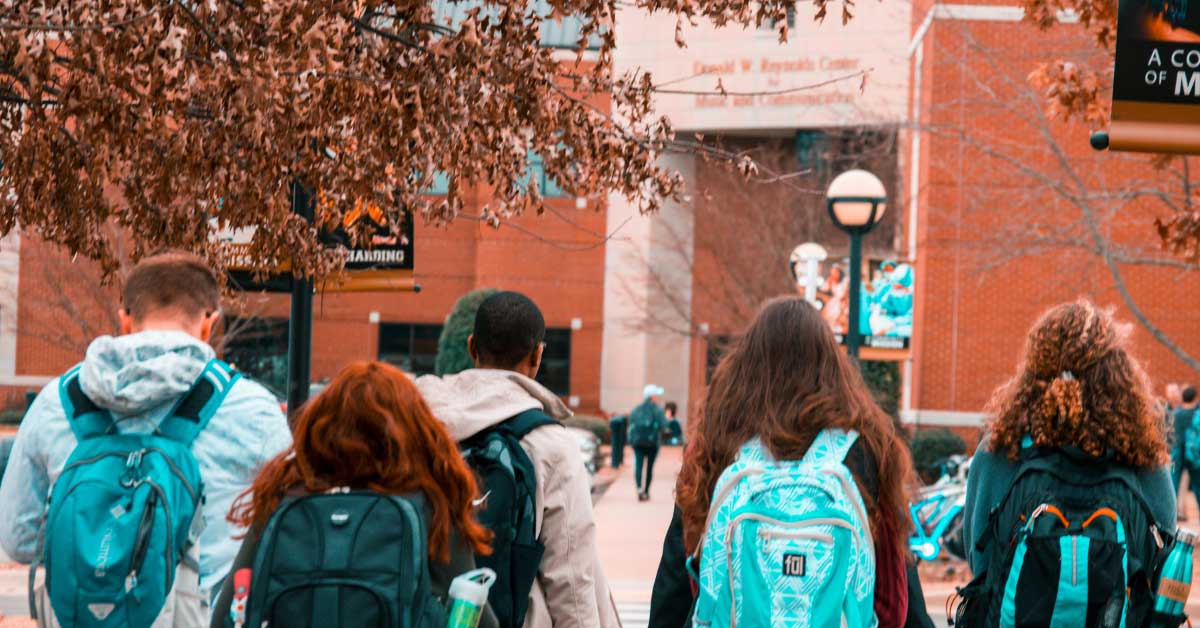Table of Contents
The F-1 visa is the US visa required for international students who wish to enroll in a program at one of the top US universities. In this article, our immigration experts provide an overview of the F-1 student visa and more importantly highlight legal routes to be considered for those who want to stay in the U.S. post-graduation, including a permanent option through the U.S. EB-5 Immigrant Investor Program. The EB-5 Investor Program allows the applicant to obtain a U.S. Green Card in exchange for an investment in a government approved project.
What is the F-1 student visa
The F-1 student visa is a non-immigrant student visa that allows foreign nationals (international students) to pursue academic studies in the United States at an accredited US college or university under the EB-5 Immigrant Investor Visa Program.
F1 Student Visa Eligibility Requirements
To be granted an F-1 student visa, applicants must hold a valid passport, a photo for the visa application, a completed DS-160 and I-901 SEVIS payments, a completed I-20 form, notarised school transcripts and scores, and bank statements or proof of finance.
Who can apply for an F-1 student visa?
International students: If you are not a US citizen or permanent resident and you want to study in a US college or university, or even a private school for minor children, you will need to obtain an F-1 visa.
Language students: If you want to take a language course that is not for academic credit, you can apply for an F-1 visa. This type of visa is also known as an English as a Second Language (ESL) program.
Exchange students: If you are participating in an exchange program that allows you to study in the US, you will need to obtain an F-1 student visa and a J exchange visa.
Research scholars: If you are a research scholar or professor who wants to conduct research or teach at a US academic institution, you can apply for an F-1 visa or a J visa.
Overall, the F-1 student visa is designed for individuals who want to pursue academic studies in the US, including those who are pursuing non-degree programs such as language courses, vocational programs, and exchange programs.
Is it allowed to work under an F-1 student visa?
International students may be eligible to work under an F-1 student visa, but there are limited opportunities. Under this F-1 visa, you are generally allowed to work only on-campus part-time (less than 20 hours per week), and the job should be related to the student’s field of study. For those studying in fields like engineering or law, it may be difficult to find a suitable position at school, thus missing out on some valuable practical training in actual US companies and firms. This practical experience can help accelerate their career growth after the completion of their studies.
F-1 Student Visa validity
The F-1 student visa is typically issued for the duration of the academic program a student is enrolled in. The length of the F-1 visa validity period varies depending on the length of the academic program.
Generally, an F-1 visa may be issued up to 120 days before the program start date, allowing students to enter the US within that period. After entering the US, students must maintain their F-1 status by attending the authorized school, making normal progress towards completing their course of study and avoiding unauthorized employment.
It’s important to note that the F-1 visa does not confer permanent residence or the right to remain in the US indefinitely. If a student’s academic program or OPT ends, they will need to leave the US or obtain a different visa status to stay in the US.
How long can F-1 visa students stay in the US after their program ends?
After an F-1 visa student completes their academic program, they are allowed to remain in the US for a period known as the “grace period.” The grace period is typically 60 days after the completion of the program date on the Form I-20 to leave the United States. During this time, F-1 visa students can prepare to leave the US, apply to change their visa status, or decide to pursue additional studies.
It’s important to note that during the grace period, F-1 visa students are not allowed to work or study in the US, except in some limited circumstances outlined by the US Citizenship and Immigration Services (USCIS). Therefore, F-1 visa students need to plan and make the necessary arrangements before their grace period ends.
What are the options for F-1 students who want to stay in the US after graduation?
Optional Practical Training (OPT)
After completing their degree, F-1 students may be eligible for Optional Practical Training (OPT), which allows them to gain work experience in their field of study in the US for up to 12 months. After 12 months, some international students who have earned a degree in science, technology, engineering, and math (STEM) fields, may be eligible to extend their OPT for an additional 24 months, after which the student must return to their home country.
In case a student wants to continue after the OPT expires, they must find another option to stay and work legally in the US. In some cases, their employer can initiate the sponsorship of the student and start the process of getting an H-1B visa through the US Citizenship and Immigration Services (USCIS).
H-1B Employment & Work Visa
The H-1B visa is a non-immigrant work visa that allows immigrants and newly graduated international students to work in high-skilled job positions in the US. However, the H1-B visa route has become frustrating and uncertain for many applicants. As an increasing number of foreigners apply to migrate to the US via this visa category, H1-B employment visas are now allotted annually based on a lottery draw. This means that now even for those who have secured a job position or found an employer willing to sponsor them, the H1-B visa is not guaranteed.
For those who are lucky enough to secure an H-1B visa, it still comes with some limitations. Foreign workers are tied to their employers, sometimes limiting career growth or movement. If one were to lose their job, the time to find another position is also limited, after which they must exit the US. This is disappointing for those who have built their homes and families in the US over many years.
US EB-5 Immigrant Investor Program
An international student can also choose the route of investing in the US economy in exchange for a permanent resident card also called a US green card. This path has become immensely popular among international students and their families over the past years, as it offers more security than other routes. The US EB-5 Visa Program for international students allows the applicant to invest a refundable amount of USD $800,000 in a government-approved project. Under this route, the investor, the investor’s spouse, and any children under the age of 21 can obtain a green card under one single application. A child can be the primary applicant having the funds for the investment gifted from a parent. This strategy is being used by many families across the GCC who already have a child studying in the US on an F-1 visa or who may be on OPT post-graduation.
Contact an immigration advisory firm Step Global to start your immigration journey
Step Global is a leading immigration consultant in the UAE and MENA region, headed by US immigration lawyer Preeya Malik, who is a renowned expert on the EB-5 program. Over the last decade, Preeya Malik has greatly contributed to bringing attention to the EB-5 visa program and its benefits in the GCC, the Middle East, India, and Africa. Together with her legal team, Step Global has helped thousands of applicants and their families migrate to the U.S. under the EB-5 program which has the highest approval rates in this region.
Immigration Consultancy in Dubai
Step Global, an immigration consultancy in Dubai specialised in citizenship and residency by investment programs, can assist you with your application for the Portugal Golden Visa, US EB-5 Immigrant Investor Program, and Canada Start-Up Visa.
FAQs
In short, no, F-1 students cannot work. They are strictly prohibited to work off-campus; however in some cases they are permitted to work on-campus (subject to certain restrictions).
An F-1 visa allows students to legally study in the USA full-time. They can also transfer schools if they want to (subject to USCIS approval) as well as legally work part-time on campus (as mentioned above).
After graduating, students have the option to change from a student F-1 visa to a H1-B working visa, which allows them to continue to live and work in the U.S. However, to obtain a H1-B visa, the student must obtain a job offer from an employer who is willing to sponsor them. Even if they manage to secure that, they will then enter a lottery system to actually be granted the visa, and as of 2024, the lottery system is incredibly oversubscribed, with around 10-15% of applicants actually being granted the much coveted H1-B Visa.
It is possible for a student to extend their F-1 visa. They would need to meet with their Designated School Officer (DSO) to discuss their options. Any application for extension must be carried out before the program end date on the for students I-20.
The short answer is yes, you will have to pay taxes whilst on an F-1 Visa.
An applicant on an F-1 Visa may also owe state income taxes depending on which state they are residing in. However, it is important to note that F-1 students (generally) will not need to pay Social Security and Medicare taxes.
Popular searches
EB-5 Backlogs Through Faster Processing | US EB-5 green card | EB-5 Visa Guide | Citizenship by Investment Program Guide | Skilled Migrants Guide | Need of an Immigration Lawyer | Visa Options For US Residency | EB-5 Visa-No Backlog for Indians | EB-5 Direct Investment vs. Regional Center Investment | Benefits of US Green Cards | EB-5 Investors and Dependents | Differences Between a Green Card and H1B Visa | Does The United States Have A Golden Visa | New Development in EB-5 Immigrant Investor Program | New EB-5 – more Efficiency and Security | EB-5 India Retrogression | US Investment Programmes – Entry Options | EB-5 visa Vs. E-2 visa | Policy changes in EB-5 visa program | Immigrating to The United States Without a Job Offer
Fill in the form below to get in touch with a Step Global lawyer and discuss the benefits of green cards.






